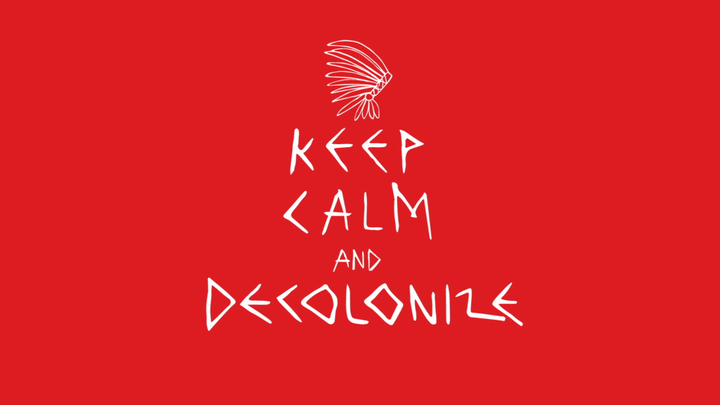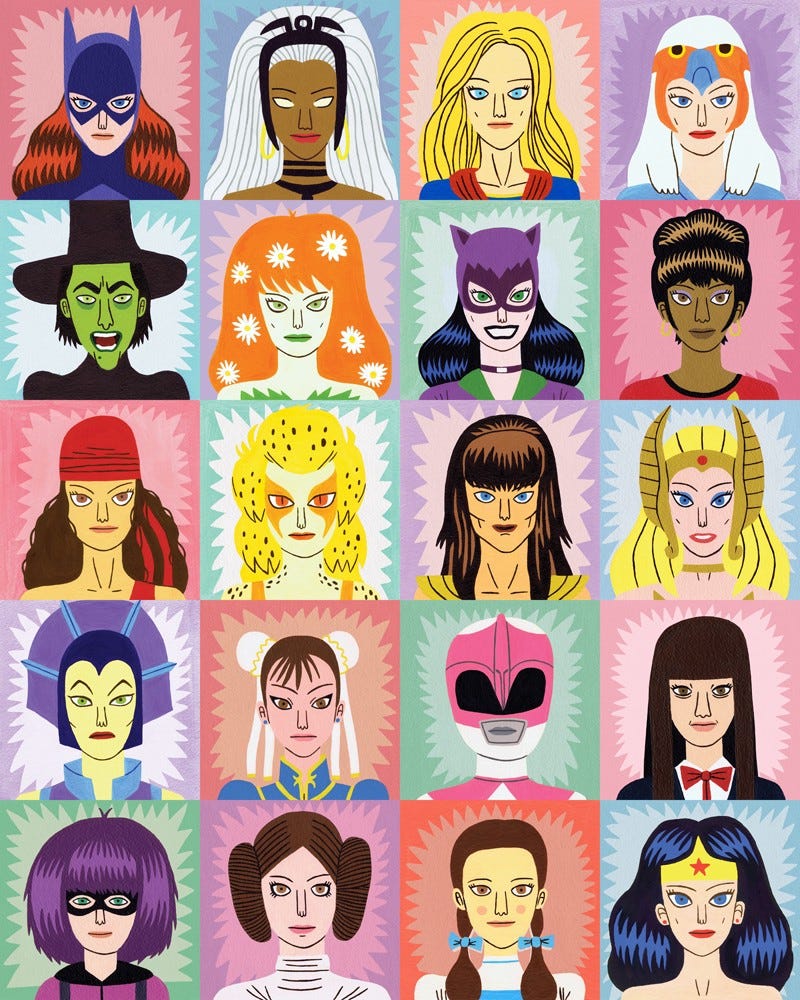An Immerse response
Kamal Sinclair’s series is an epic contribution to the field.
This is an unprecedented research project synthesizing over 100 interviews, and a mother download of links from one of the brightest minds in the new frontier of emergent storytelling. The volume and power of the voices Sinclair has brought together, in harmony and often in syncopation, sounds a roaring call to action, because inclusion in the tech and media worlds has been systemically, historically denied. This report is the culmination of Sinclair’s deep work and years of singular commitment to the urgent issue of inclusion in all aspects of media-making, traditional and emergent.
I write this as a colleague: Kamal and I are both on the editorial board of Immerse, and we are both authoring research projects for Just Films at Ford Foundation.
At this early juncture of the release of Kamal’s series, I’d like to amplify two words in her report. One is a noun: The internet. The other is a verb: Decolonize.

First, the Internet
In “The High Stakes of Limited Inclusion,” Kamal rings an alarm, citing billionaire Klaus Schwab’s (perhaps hyperbolic) insistence that we are in the dawn of a “fourth industrial revolution.” Sinclair also evokes a new geological epoch, the Anthropocene, to stress the urgency of climate change, as well as global nuclear build-up. Scientists argue there is a permanent mark on our geological record of distinct nuclear debris. These strong assertions of a new period in history are, of course, being made to assert: WE HAVE NO TIME TO WASTE.
Within these theoretical contexts, which themselves could use critical unpacking, but not here, Kamal argues that the current suite of technologies — emerging media such as VR, AR, XR, AI, IoT and others — provides us with a unique window, for “ushering in sweeping changes that have enormous promise for advancing civilization.”
“It is broadly acknowledged,” she writes, “that, if misused, these emerging technologies pose powerful threats to the goal of creating a more equitable world.”
While I agree broadly that the introduction of new technologies opens a window of liminality in which art and social justice stand a chance, I worry whether we really are at a dawn of opportunity with this particular suite of technologies — many of which are already closed, proprietary, or nearly impossible for those with few means to access.
I’m afraid that major moment of hope — arguably in our lifetime — may be passing.
After all, we once collectively had similarly high aspirations for the internet. Right now, we are on the eve of some of the most catastrophic blows to net neutrality. We are entering a profound period of the incarceration and (re)colonization of the World Wide Web. The emerging suite of technologies that Kamal describes are tethered to that foundational reality. They will not contribute to the liberation of humanity if the internet as we currently know it is lost.
One of the problems is that net neutrality seems boring. It’s about legislation, regulation, bureaucracies…zzzzz. It doesn’t feel revolutionary. It can’t be monetized. It’s just the hard labour of good governance.
It’s a big load to bear, but meaningful calls for inclusion in the tech and media world first need to be grounded in movements defending the freedom of the internet.
These are dark days for the web. Monopolies, walled gardens, surveillance and fear have spread across the internet. On the flip side, there is a new wave of open emerging: a grassroots movement for online freedom, creativity and opportunity for all,” says Mark Surman, of Mozilla Foundation, in The New Statesman.
And, conversely, the internet freedom movements need to do more to mindfully recognize their own hierarchies and to include, as Sinclair so eloquently states, “robust participation of people from a broad set of communities, identity groups, value systems, and fields of knowledge in this emerging media landscape, in all roles and levels of power.”
 Illustrator: Jack Teagle
Illustrator: Jack Teagle
An inspiring example in Detroit, is this digital justice project to build an autonomous internet. Through profoundly community-based approaches, it aims to close the digital divide in that city, where 40% of residents do not have internet access.
As new technologies emerge, they are built on the fragile foundations of the internet as we know it — even if they do also provide uncharted possibilities for storytelling and also new additional sets of questions about who is included and who is not.
Despite this, there are, of course, amazing rays of hope, moonbeams in the darkness.
The other word is DECOLONIZE.
At this point in our geological trajectory, “inclusion” can’t just mean a seat at the table, in all roles and levels of power. It needs to come within a broader framework of decolonization. Sinclair quotes Heather Rae’s brilliant concept of the “decolonization of the consciousness.” It’s a necessary starting point, and it’s where storytelling might be at its strongest. First comes the liberation of our imaginations.
We need to also decolonize the very entrenched systems that devise the way we run our economies, define what is “science,” and what technologies are even invented. To build on Kamal’s metaphor, we need to decolonize the entire operating system.
As adrienne maree brown has written here at Immerse, “Those who own the companies that shape our communications look like those who run the banks, military and government, the sheriffs and police chiefs—younger, but still white, male, concerned with ‘diversity’ as an afterthought or an act of benevolence, celebrating themselves as innovators. They are millionaires and billionaires slowly consolidating all the ways we build patterns with each other, accountable primarily to themselves and their investors.”
History does not just run “its course,” as Gunter Ollman says and so technological advancement does not “veer history off its course.” The stories that are told and the history that is written (after the fact) is the rationalization for how the chips fell, the technologies invented, heavily to the victors’ side.
Kamal evokes a haunting fictional scene for us: Nyarru Morgan, the protagonist of Collisions VR (created by Lynette Wallworth and Nicole Newnham-Malarkey), sitting at the table with Oppenheimer, the inventor of the nuclear bomb, or others like him, to define how nuclear power might be used. “What if, instead of being blindsided by the decision to use atomic energy as a weapon, Nyarri Morgan had been one of the people helping to define how it was used? Perhaps by telling his ancestral stories of land stewardship and kinship social systems he could have pointed the way to different possibilities. What bugs in our operating system might have been circumvented?” asks Sinclair.
Decolonization means that in another narrative, in another time, in another history, nuclear power may not have been invented at all. This is why we must be careful of whose truths we accept. Decolonization upsets the very table itself.
In Canada, we’ve recently had a very powerful set of specific recommendations laid out on how to begin decolonization. There are 26 of those recommendations in the monumental Truth and Reconcillation Report, which was a deep inquiry into the brutal, systemic and genocidal Residental school system enforced by the colonialist Canadian government on Indigenous communities, from 1870s to 1996.
And of course, there’s Buffy Sainte-Marie. On Twitter, she famously proclaimed, “Keep Calm. and #Decolonize.”
A new, moving artistic response to Buffy’s call is this poignant series of short films also entitled Keep Calm and Decolonize
In one of the films, Flood, built out of director Amanda Strong’s striking shadow puppets and layered media, a youth named Thunder must navigate through storms of paper and laws of colonization. Guided by the spider woman, she must act in resistance to let freedom rise. It’s a stunning short film.
J. Robert Oppenheimer spent the rest of his life in regret after his nuclear invention was used as a bomb in 1945 that immediately killed over 120,000 people, with tens of thousands later dying of exposure to radiation. So the image of Nyarru Morgan and Oppenheimer sitting together, discussing the threat and possibility of nuclear energy in the context of Martu worldview, with equal voice and power, is an image that has burned into my mind, and I’m grateful to Wallworth and Sinclair for it. It is a powerful symbol of the potential of co-creative practice: bringing divergent perspectives to come together to find new solutions to old, complex problems. It’s one of the central tenets of our philosophy that we are exploring at the emergent Co-Creation Studio at MIT’s OpenDocLab.
Whether we are in another industrial revolution (or not), whether we agree on the opportunity of current emerging tech (or not), whether we call it reconciliation or decolonization, the future is now. Full participation must happen.
In deep appreciation of the doors and floodgates Kamal is opening with this report.
Katerina Cizek is the Artistic Director, Executive Producer and an Emmy-winning documentarian heading up the emergent Co-Creation Studio at MIT Open Documentary Lab
Immerse is an initiative of Tribeca Film Institute, MIT Open DocLab and The Fledgling Fund. Learn more about our vision for the project here.